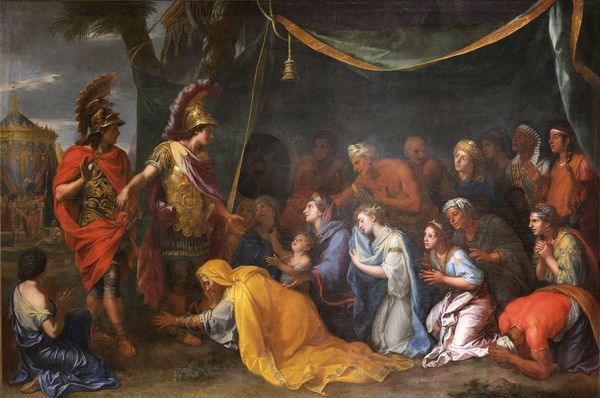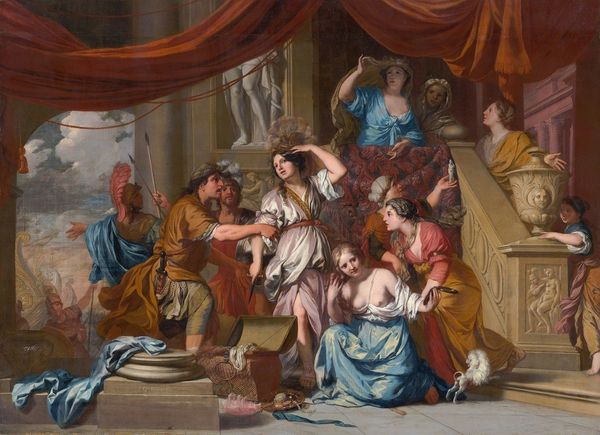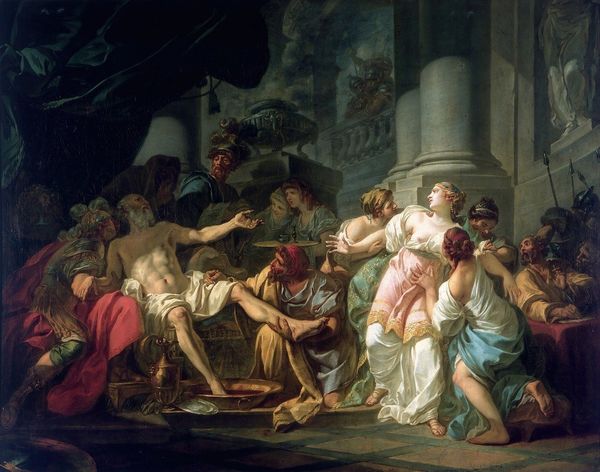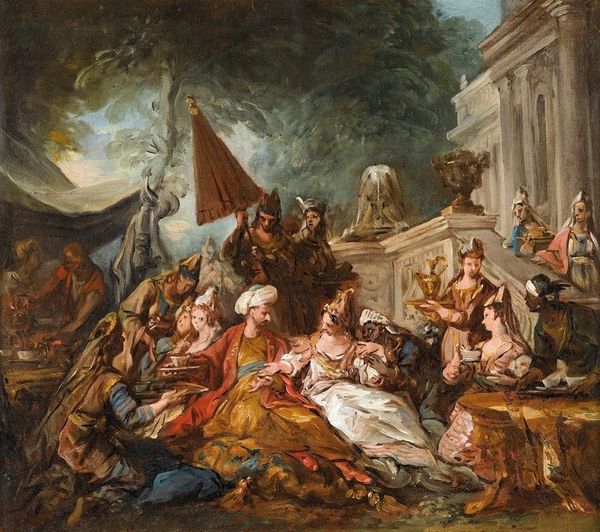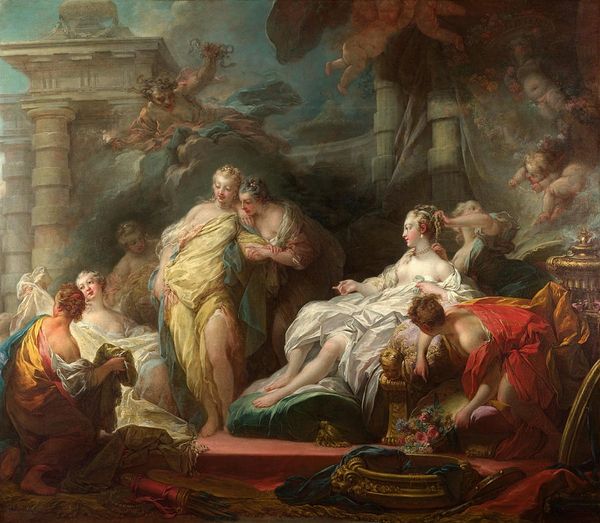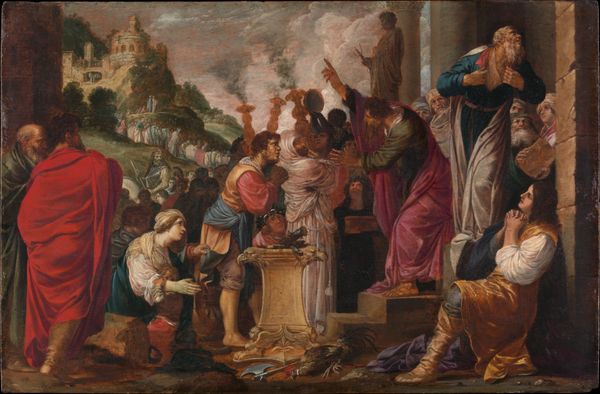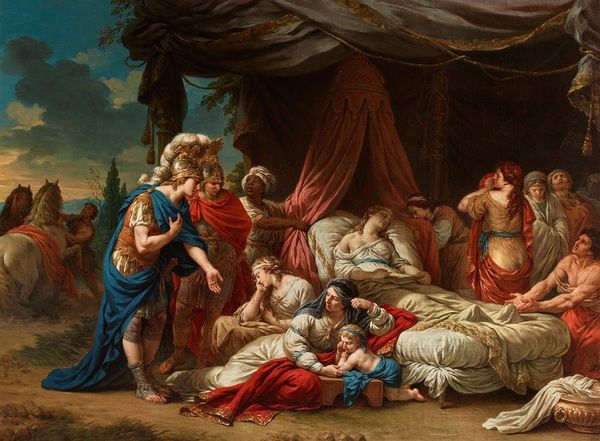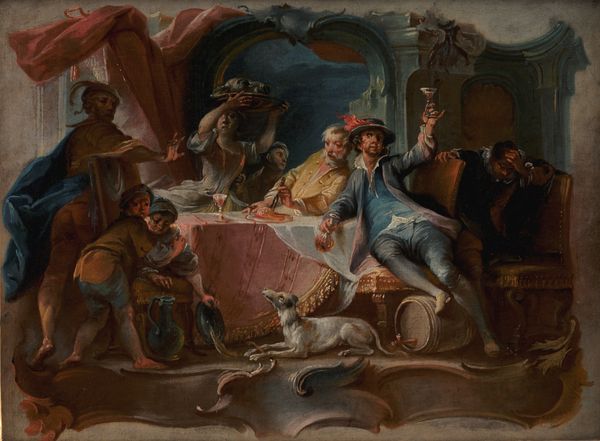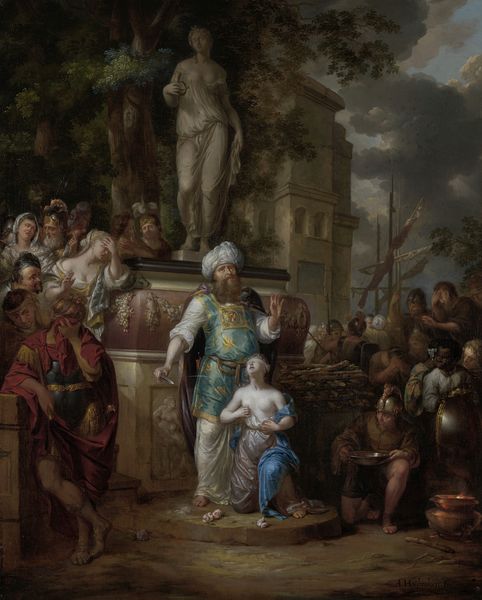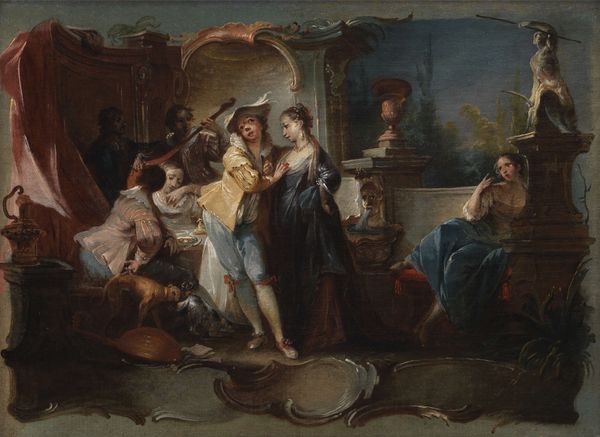
painting, oil-paint
#
gouache
#
narrative-art
#
baroque
#
painting
#
oil-paint
#
figuration
#
history-painting
Dimensions: height 61 cm, width 80 cm
Copyright: Rijks Museum: Open Domain
Isaac Walraven painted "The Death of Epaminondas," during the 18th century, a period marked by the Enlightenment, and the rise of Neoclassicism. The artwork depicts a scene of male grief, with men surrounding the dying Epaminondas. While the focus is on the male hero, the role of women is limited to expressions of sorrow. The cultural and historical context of Walraven's time, deeply rooted in classical ideals and patriarchal structures, shines through. "The Death of Epaminondas," perpetuates traditional gender roles, while underscoring the period's fascination with ancient virtues and heroic sacrifice. Walraven's choices in the depiction of gender roles provide a powerful insight into the social and cultural norms of his time. It offers a glimpse into a world where heroism and leadership were predominantly male domains, and women were relegated to roles of mourners and caretakers.
Comments
rijksmuseum about 2 years ago
⋮
Epaminondas was a Theban general who led the battle against Sparta in ancient Greece. His death from this struggle is an episode that was seldom depicted. These kinds of far-fetched and complex compositions were popular in the early 18th century. They allowed the painter to display his erudition and his masterly command of the full range of human feelings and emotional states.
Join the conversation
Join millions of artists and users on Artera today and experience the ultimate creative platform.
